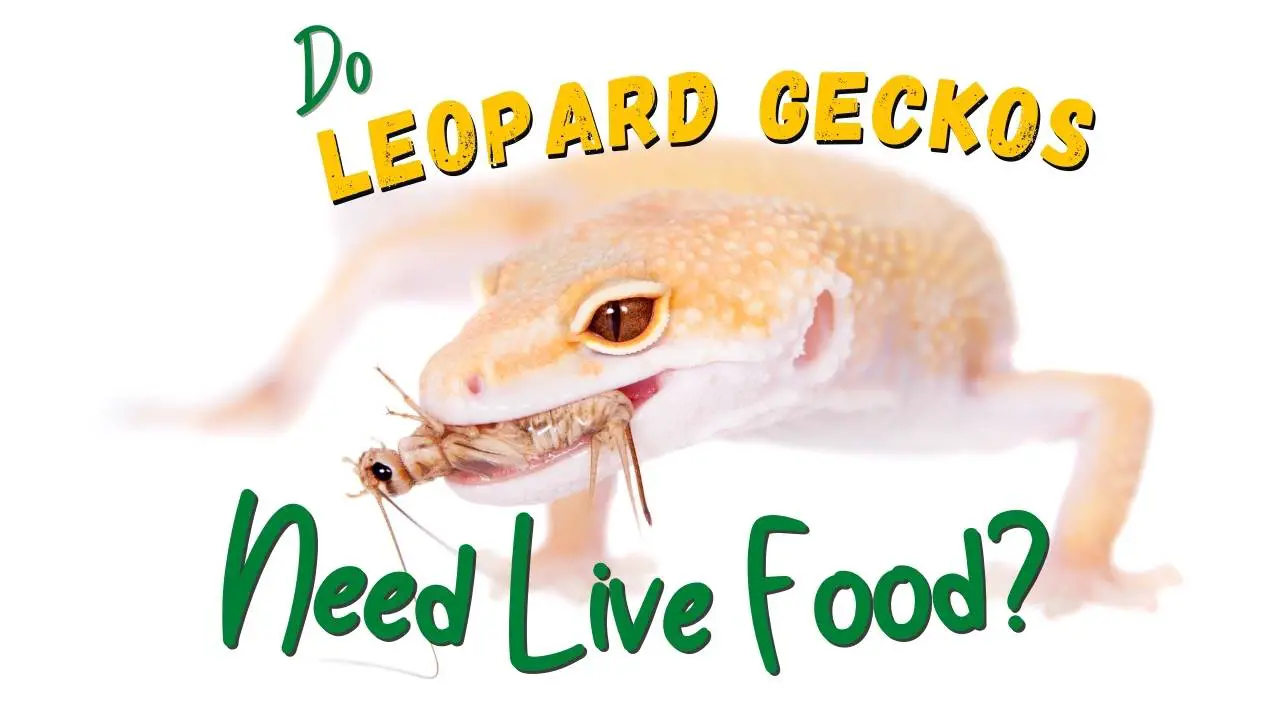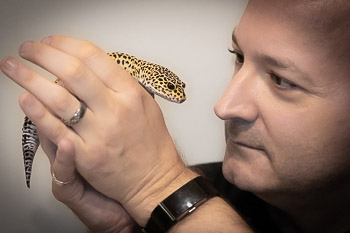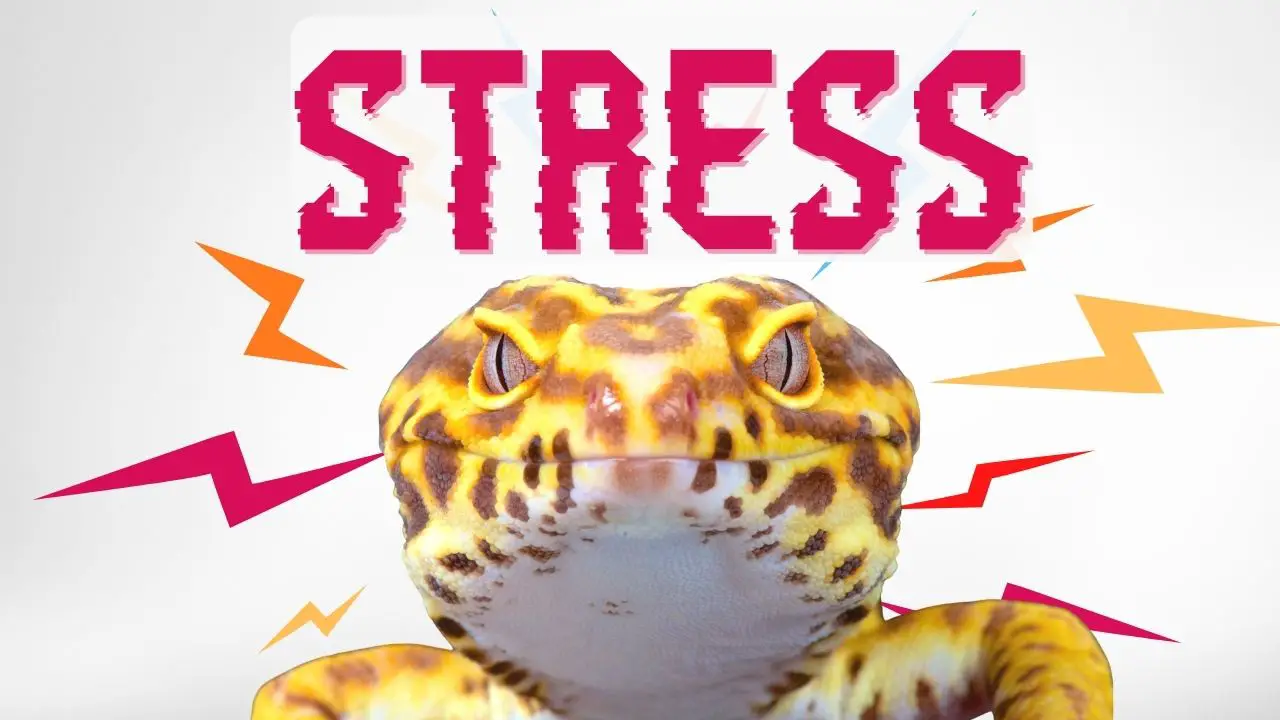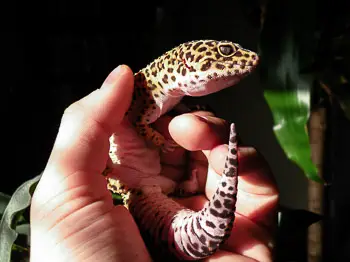Leopard geckos are one of the most popular reptiles kept as pets due to their friendly personalities and ease of care. They are easy to care for, though many new leopard gecko owners don’t realize they’ll also be caring for and housing insects. That’s right; leopard gecko food is mostly live insects.
Read on to learn why live food is important for leopard geckos, what types of live prey should be fed, and how to ensure your gecko receives a balanced diet. If you’re planning to get a pet leopard gecko or already have one, embrace the fact that you’ll be feeding it live insects.
Overview Of Diet Requirements
As leopard gecko owners, it is important to understand that a varied diet of insects is what your pet needs to thrive.
While you can buy frozen, canned, or freeze-dried insects these should not be the main floor source. These foods do not provide the same level of enrichment as live food. A proper diet for a healthy leopard gecko needs to include live insects.
Live food enables them to better absorb nutrients, while also providing hydration. While some hydration is provided by eating live insects, always remember to keep a supply of fresh water available.
Live insects wriggling around have the advantage of providing natural movement which encourages hunting behavior.
Lizard owners need to get used to the idea that in addition to their pet, they’ll also be keeping and caring for live insects. Variety is key when considering what to feed your gecko – different insects offer different types of nutrition, so it’s best to offer them choices.
Types of Live Food
Live food is an important part of any leopard gecko’s diet, and there are plenty of options available to keep your pet well-fed and healthy. Crickets, mealworms, and superworms are popular live insects that can provide your gecko with the protein, calcium, and fat they need. For a special treat, you can also offer up some wax worms or hornworms.
Crickets and Mealworms
Crickets and mealworms are two of the most popular live food sources for leopard geckos. They provide a great source of nutrition, including protein, calcium, and fat. Both should be readily available from local pet stores or online vendors.
Crickets can give your gecko a workout as they hop around the enclosure.
Mealworms can be refrigerated to keep them longer. Before feeding, let them warm up and offer them some vegetables 12-24 hours before offering them to your gecko. This is referred to as gut loading, which we’ll discuss later.
Superworms and Wax Worms
Superworms and wax worms are two tasty live food sources that leopard geckos absolutely love! Superworms are larger than mealworms, making them a great source of protein for your pet. They also provide essential vitamins and minerals like calcium and fat.
Wax worms, on the other hand, are small and have a sweeter taste, so they make a good treat for your gecko. Wax worms should only be fed in moderation as they contain more fat than most other insects – but they can still be an occasional treat!
When feeding your pet superworms or wax worms, you should never feed them exclusively; these should be used as complimentary treats in addition to their regular diet due to their high fat content.
Related post: Is my leopard gecko overweight?
Dubia Roaches
Dubia roaches are a great live food source for leopard geckos, and are an option many reptile owners overlook! (Ewwww, roaches, right?)
Unlike some other live insects, these little guys are pretty clean and don’t carry diseases. (They smell alot better than crickets!) The adults can grow larger than most other feeder insects, so they provide your pet with plenty of protein and other essential nutrients.
Dubia roaches are easy to care for and require minimal maintenance – just keep them in a warm, dry environment and feed them fruits or vegetables occasionally. They can also be stored for longer periods of time without needing to worry about them dying off quickly.
Silkworms and Hornworms
Silkworms and hornworms are high in protein and fat, making them an ideal choice for providing your pet with a well-rounded diet. Silkworms have a soft, silky texture that many geckos love, while hornworms offer a crunchy and savory flavor that’s sure to tantalize their taste buds.
Sourcing Live Food Safely
Most pet stores carry a variety of feeder insects. If you can’t find what you’re looking for, you can order quality live insects online.
DO NOT feed your leopard gecko wild insects. It may be tempting to grab a cricket, grasshopper, or beetle from your backyard as a quick meal for your gecko. Wild insects may be carrying parasites or have been exposed to pesticides or chemicals that can harm your pet.
When sourcing live food from pet stores, it’s important to make sure that you’re purchasing healthy prey. Look for active movement in your insects; if the prey looks sick or sluggish, pass on it! Additionally, pet store prices may be higher than online vendors or home breeding.
Bassett’s Cricket Ranch is a reliable source for mealworms, crickets, and super worms.
Josh’s Frogs offers a variety of worms and crickets, as well as Dubia Roaches.
You can also look into breeding your own insects. Breeding feeder insects at home can be a great way to ensure quality nutrition for your leopard gecko. Mealworms are particularly easy to breed, and you can also breed your own super worms (moria worms) or dubia roaches. Take a look at our breeding guides for mealworms and super worms for more information.
Live prey should also be appropriately sized for your leopard gecko. Too large of a meal can cause digestive problems or impaction. As a rule of thumb, insects should be no larger than the space between your gecko’s eyes.
With these tips in mind, you can be confident when sourcing live food for your leopard gecko. Now, it’s time to serve up some meals!
Preparing Live Insects
The main consideration for preparing live food is gut loading your insects. This means making sure your feeder insects have eaten their fill shortly before feeding them to your gecko. Feeding fresh produce such as apples or carrots provide nutrition and hydration to keep your feeder insects alive, while passing those nutrients along to your pet gecko.
As well as providing fresh insects to eat, you should also provide a calcium supplement. Calcium powder will help keep their bones strong and healthy. You can dust your insects with the powder prior to offering them to your gecko.
For crickets and dubia roaches, it’s easiest to have a small plastic bag full of powder to place the insects in. Shaking the bag will cover the insect in the powder, and your gecko will get the benefits of the supplement.
Calcium powder does not stick to mealworms or super worms very well. You can also provide supplement powders in a small dish so your gecko can lick it as needed.
Don’t like handling bugs? Get yourself some aquarium tweezers and keep the insects at a distance.
Author Name
It’s also important to consider the size of the food items you are offering your leopard gecko. As a general guideline, the insects should be no bigger than the space between the gecko’s eyes, so it isn’t too difficult for them to catch and eat them. If they swallow something too big, they may have problems digesting it, or it could get stuck in their digestive system causing impaction.
With this in mind, a baby gecko should get smaller food items than adult geckos. You should scale up the size of your insects as your gecko grows to adulthood.
Enclosure Considerations For Feeding Live Prey
Having discussed healthy eating habits for leopard geckos, it is important to consider the enclosure considerations for feeding live prey. To ensure the safety of a gecko, the enclosure should be designed with careful thought and observation. A proper habitat allows a gecko to feel secure, and provides an environment that mimics its natural environment.
The size of the enclosure will depend on your leopard gecko’s size. Smaller enclosures may be suitable for juveniles, but adults should have enough space to move around and explore. When choosing an enclosure, make sure that it is escape-proof and has secure lids or locks. Also, take into account ventilation needs; some species require more fresh air than others.
An ideal enclosure should be large enough to allow your leopard gecko to hunt their own food safely and securely without becoming stressed or overwhelmed by its prey or predators in the environment.
You should remove any uneaten food items like crickets or roaches from the enclosure once your gecko seems like it’s done eating. Mealworms can be kept in a feeding dish. Look for a bowl that won’t tip over and has a lip that prevents the worms from climbing out and having free roam of the tank. We recommend this feeding dish.
Keeping Live Feeder Insects for a Leopard Gecko
Mealworms can be refrigerated, which slows down their metabolism and prevents them from going through metamorphosis. Remember to bring the ones you’re feeding to your gecko to room temperature and gut load them 12-24 hours prior to feeding them to your gecko.
Super worms should not be refrigerated. They can usually be kept in the container you purchased them in and provided with fresh produce (carrots are the easiest) to keep them alive and ready to serve.

Crickets and dubia roaches can be a bit more involved. We use a “cricket keeper” which is a plastic tank to house the insects. You’ll need to feed them, and make sure they have water. Fruit or vegetable scraps work well, and gel packs are better than having bowls of water that insects may drown in. You’ll need to clean their tank out periodically so they are not resting in or eating their own droppings. Be advised that crickets can stink.
Wrap Up – Do Leopard Geckos Need Live Insects?
Live food is an essential part of a balanced diet for these beloved lizards. Understanding the nutritional needs of a leopard gecko, as well as how to safely source live food, will help ensure your pet’s long-term health and happiness.
Their natural diets are high in protein, which helps them build muscle and maintain energy levels. Live prey also gives them exercise, as they must hunt and capture their meals. However, it’s important to ensure that the food is sourced safely and properly handled to avoid potential risks like pesticides and parasites.
Many reptile specialists recommend crickets or mealworms because they don’t require much preparation and are easy to find in most pet stores or online. Gut loading your and dusting live prey with calcium powder before feeding ensures your gecko gets the necessary vitamins and minerals they need from their diet.
Keep in mind that whatever you’re feeding your pet gecko, it’s important to maintain portion control; overfeeding can lead to obesity while underfeeding can lead to malnutrition. By monitoring how much food you provide on a daily basis you’ll be able to maintain the ideal weight for your gecko and keep it happy and healthy for years to come!





